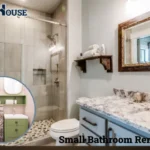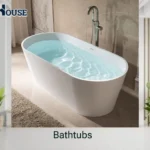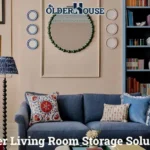Home interior design constantly evolves, with each year bringing fresh ideas and new approaches to our living spaces. In 2025, we’re seeing exciting shifts in how people decorate and organize their homes. From sustainable materials to smart technology integration, these trends shape how we experience our personal spaces. Let’s explore the top interior design trends for 2025 that will transform your home into a stylish, functional sanctuary.
Sustainable and Eco-Friendly Materials Take Center Stage
Gone are the days when sustainable meant sacrificing style. In 2025, eco-friendly materials lead the design world with stunning options for every room. Bamboo flooring, recycled glass countertops, and organic cotton textiles now come in luxurious designs that rival their less sustainable counterparts. These materials not only look beautiful but also help reduce your home’s environmental impact.
Many homeowners now seek furniture made from reclaimed wood, which adds character while giving new life to existing materials. Each piece tells a story through its unique grain patterns and natural imperfections. Companies have responded by creating entire collections from salvaged timber, offering everything from dining tables to bedroom sets with sustainability at their core.
Beyond wood, other eco-materials gaining popularity include cork for flooring and wall coverings, mycelium (mushroom-based) packaging and furniture, and plant-based fabrics. These options allow you to make green choices without compromising on visual appeal. The natural variations in these materials create one-of-a-kind elements that can’t be replicated by mass-produced alternatives.
The rise of water-based paints and finishes with low volatile organic compounds (VOCs) shows how health concerns drive sustainable choices. These products release fewer harmful chemicals into your home while providing excellent coverage and durability. Many now come in rich, designer colors previously available only in less healthy formulations, making the choice to go green easier than ever.
Multifunctional Spaces and Flexible Living
As homes adapt to changing lifestyles, multifunctional spaces continue to gain traction in 2025. More people work remotely at least part-time, making flexible living arrangements necessary. Designers now create rooms that serve dual or even triple purposes without feeling cramped or disorganized.
Murphy beds and pull-down desks have gotten sophisticated makeovers, with systems that transform spaces in seconds. These pieces now blend seamlessly with other furniture, hiding away when not needed. Some innovative designs include remote-controlled mechanisms that require minimal effort to convert a living room into a guest bedroom or home office.
Room dividers have evolved beyond simple folding screens. Today’s options include sliding panel systems, rotating bookcases, and curtain walls that can be adjusted throughout the day. These solutions allow you to reconfigure your home based on immediate needs without permanent construction. A dining area might become a workout space in the morning and a homework zone in the afternoon.
Furniture designers have embraced this trend with modular pieces that can be rearranged or expanded. Sectional sofas with movable components, extendable dining tables, and stackable storage units give you control over how your space functions. This approach proves particularly valuable in smaller homes and apartments where every square foot matters.
Biophilic Design Connects Homes with Nature
Biophilic design strengthens the connection between people and the natural world through interior choices. In 2025, this approach moves beyond simply adding houseplants to fundamentally rethinking how homes interact with nature. Living walls, indoor water features, and natural light maximization create spaces that feed our innate need for natural elements.
The pandemic changed how we value outdoor access, making features like garden doors, skylights, and picture windows more desirable. Architects now design homes with transitional spaces like covered patios and sunrooms that blur the line between indoors and outdoors. These areas function comfortably year-round with heating elements for winter and cooling systems for summer.
Natural materials with minimal processing bring organic textures into living spaces. Stone countertops with visible fossils, live-edge wood tables, and textiles with botanical motifs celebrate nature’s imperfections. These elements ground spaces with authentic character while providing tactile experiences that synthetic materials can’t match.
Color palettes inspired by landscapes create calming environments that reduce stress. Soft greens reminiscent of forest canopies, blues that echo water and sky, and earthy neutrals drawn from soil and stone dominate in 2025. These hues work together to establish peaceful retreats from the digital world while maintaining visual interest through subtle variations.
Smart Home Integration Gets Seamless
Smart technology integration reaches new levels of sophistication in 2025, with systems becoming nearly invisible within well-designed spaces. Voice-activated controls, automated lighting, and intelligent climate systems now work together seamlessly. The focus has shifted from showing off technology to embedding it naturally within the home environment.
Wireless charging surfaces built into furniture eliminate cord clutter while keeping devices powered. Countertops, side tables, and even some flooring materials now incorporate this technology. Some innovative systems allow charging through multiple surface layers, meaning you can charge a phone placed on a book resting on the table—no special placement required.
Lighting systems have become more intuitive, adjusting automatically based on time of day, exterior light levels, and room usage patterns. Circadian lighting that shifts color temperature throughout the day supports healthy sleep cycles. These systems can be programmed once and then forgotten, silently enhancing your home experience without constant management.
Home security becomes more integrated with everyday objects. Video doorbells blend into door frames, window sensors disappear into moldings, and cameras masquerade as decorative elements. This approach provides safety without the institutional feel of obvious security equipment. Many new systems use artificial intelligence to distinguish between routine activities and potential concerns, reducing false alarms.
Curved Lines and Organic Shapes Soften Spaces
After years of boxy furniture and sharp angles, curved lines and organic shapes bring softness to 2025 interiors. Rounded sofas, circle dining tables, and sculptural chairs create more welcoming environments. These forms feel both fresh and nostalgic, drawing inspiration from both nature and mid-century modern classics.
Arched doorways and curved walls return to architectural prominence, softening transitions between spaces. Once considered costly custom features, new building techniques have made these elements more accessible. Curved shower enclosures, rounded kitchen islands, and circular windows create focal points that draw the eye while creating flow.
Furniture with irregular, asymmetrical forms adds visual interest while often providing ergonomic benefits. Chairs shaped to support the human body naturally, tables with kidney-shaped tops, and free-form rugs break up the grid-like feel that dominated previous design eras. These pieces function as practical art, serving their purpose while adding character.
Pattern mixing incorporates these organic shapes through textiles, wallpaper, and accessories. Combining botanical prints, abstract curves, and hand-drawn motifs creates layered spaces with depth and personality. The key lies in maintaining a cohesive color story while allowing shapes to complement rather than compete with each other.
Bold Colors Return in Thoughtful Applications
While neutrals remain foundational, bold colors make a strong comeback in 2025 design. Rather than painting entire rooms in vibrant hues, designers use strategic color placement for maximum impact. A jewel-toned sofa against neutral walls, richly colored kitchen cabinets paired with simple countertops, or a vivid accent wall can transform spaces without overwhelming them.
Unexpected color combinations create fresh energy in interiors. Terracotta with navy, olive green with mauve, and mustard with teal represent popular pairings that feel both current and timeless. These combinations often take inspiration from nature, art, or cultural traditions, grounding even the boldest choices in familiar references.
Color drenching—using the same shade across multiple surfaces in a room—gains popularity for creating immersive experiences. This technique involves applying a single color to walls, trim, and sometimes even ceilings or furniture. When done with care, this approach creates cohesive, womb-like spaces that feel both modern and cocooning.
Colored concrete, tinted glass, and pigmented wood finishes expand where and how color appears in homes. These approaches integrate color into structural and functional elements rather than applying it only as a surface treatment. A pale blue concrete floor, amber glass shower divider, or green-tinted wooden cabinets bring color into unexpected places with surprising subtlety.
Handcrafted Elements and Artisanal Touches
Mass production fatigue drives increased appreciation for handcrafted items and artisanal workmanship. In 2025, designers incorporate hand-thrown pottery, woven textiles, and custom woodwork to add soul to interiors. These pieces bring human touch and unique character that machine-made items cannot replicate.
Local craftsmanship connects homes to their geographic context and supports community economies. Regional materials worked by local artisans add authentic storytelling elements to spaces. Hand-carved wooden details, metalwork by neighborhood blacksmiths, and ceramics from nearby studios make homes feel connected to their surroundings rather than generic.
Imperfection becomes valued rather than avoided, with wabi-sabi principles influencing mainstream design. Slightly irregular edges, visible brush strokes, and natural variations communicate authenticity. This shift represents a move away from the perfect but soulless aesthetic that dominated in previous years toward spaces with genuine character.
DIY culture continues evolving from hobby to serious design approach, with homeowners learning traditional crafts to create custom elements. Classes in everything from weaving to furniture making help people develop skills to personalize their spaces. The results might include a handwoven wall hanging, custom-built shelving, or hand-painted tiles that reflect personal skill and taste.
Vintage and Upcycled Finds with Modern Context
Vintage pieces continue gaining value beyond sustainability, bringing historical context and character to contemporary spaces. Designers mix periods freely, placing mid-century chairs alongside contemporary tables or antique storage pieces in minimalist settings. This approach creates tension between old and new that keeps spaces visually engaging.
The hunt for unique pieces drives interest in estate sales, auctions, and second-hand shops. Finding items with history and patina has become a rewarding part of the design process for many homeowners. Online marketplaces make finding specific vintage items easier, expanding access beyond local sources to nationwide or even global options.
Upcycling transforms outdated pieces with good bones into fresh designs through refinishing, reupholstering, or repurposing. An old dresser becomes a bathroom vanity, vintage doors transform into headboards, and retro light fixtures gain new life through rewiring and updated finishes. These projects reduce waste while creating truly one-of-a-kind elements.
Family heirlooms find new relevance through thoughtful incorporation into modern settings. Rather than designing entire rooms around antique pieces, today’s approach integrates them naturally into everyday life. A grandfather’s desk serves as a work-from-home station, grandmother’s china displays in a contemporary cabinet, or vintage photographs hang in sleek frames.
Global Influences with Respectful Interpretation
Global design influences reshape American homes in 2025, with respectful cultural appreciation driving trends. Japanese minimalism, Scandinavian functionality, Mediterranean warmth, and African patterns all lend distinctive elements to contemporary interiors. The key lies in understanding these traditions rather than simply appropriating their surface aesthetics.
Travel experiences inform personal design choices as people incorporate memories into their homes. Textiles purchased during trips abroad, cooking tools from favorite destinations, or color schemes inspired by meaningful places create spaces that tell personal stories. These elements transform houses into deeply personal reflections of lived experiences.
Fusion approaches blend multiple cultural influences into coherent new styles that respect their origins. A living room might feature Moroccan floor cushions with Japanese-inspired low tables and Italian lighting. When done thoughtfully, these combinations create rich, layered environments that avoid feeling like theme parks or museums.
Cultural context matters more than ever, with designers and homeowners educating themselves about the significance of elements they incorporate. Understanding the history and meaning behind design traditions leads to more authentic integration. This thoughtful approach results in spaces that honor diverse influences while creating something new and personal.
Personalized and Customized Solutions
Generic design solutions continue falling out of favor as personalization and customization drive trends in 2025. Homeowners increasingly reject one-size-fits-all approaches, instead developing spaces that truly reflect their needs, values, and personalities. This shift applies to everything from storage systems to furniture arrangements to color selections.
Data-driven design helps create homes tailored to specific usage patterns. Smart technology tracks how people actually use their spaces, informing furniture placement, lighting plans, and organization systems. Some forward-thinking designers now begin projects by analyzing clients’ movement and behavior patterns before making recommendations.
3D printing enables truly customized decorative elements and functional components at increasingly accessible price points. Everything from drawer pulls to light fixtures can be designed specifically for your space and produced on demand. This technology allows forms that would be impossible or prohibitively expensive with traditional manufacturing methods.
Personal collections display more prominently, with custom solutions designed to showcase cherished objects. Whether featuring vintage cameras, travel souvenirs, or family photographs, these displays tell your unique story. The best designs integrate these collections into daily life rather than isolating them in formal display areas, allowing you to enjoy your treasures every day.
As we look ahead, the most successful homes will blend these trends in ways that feel authentic to their owners. Whether you prefer sustainable materials, smart technology, or handcrafted elements, these design directions offer exciting ways to refresh your living space. For more inspiration and practical advice on bringing these trends into your home, visit ThisOlderHouse.com, where tradition meets innovation in creating spaces that truly feel like home.




